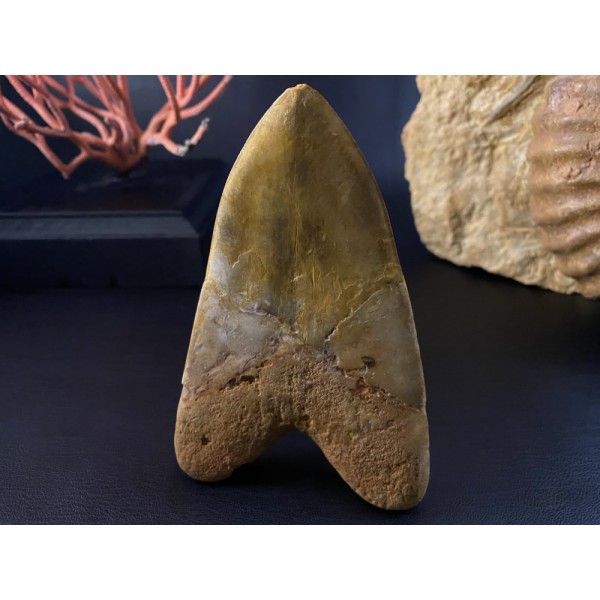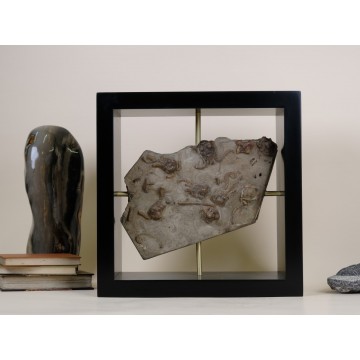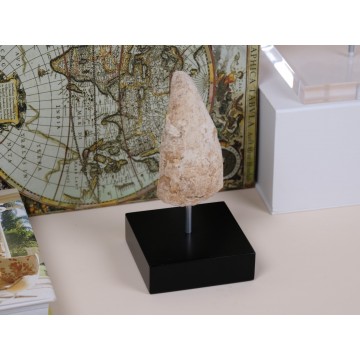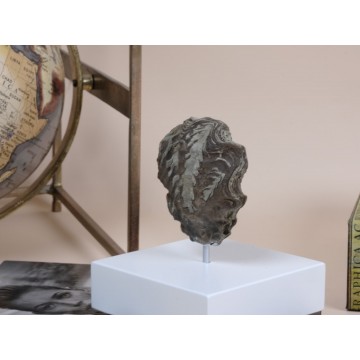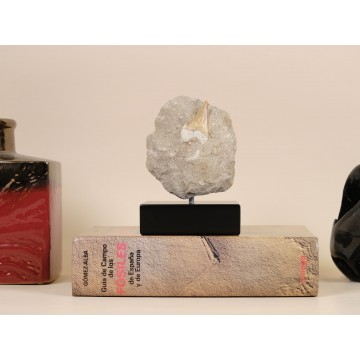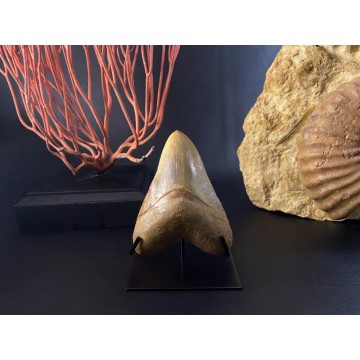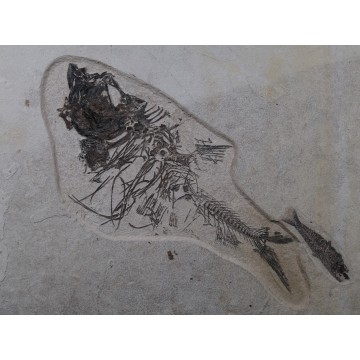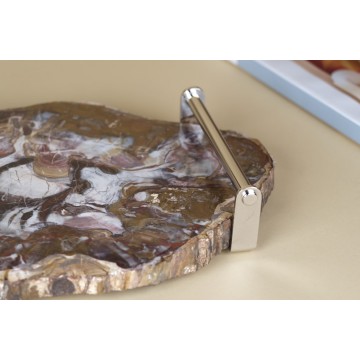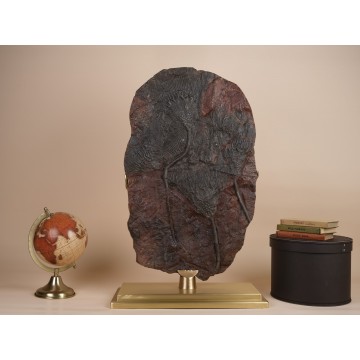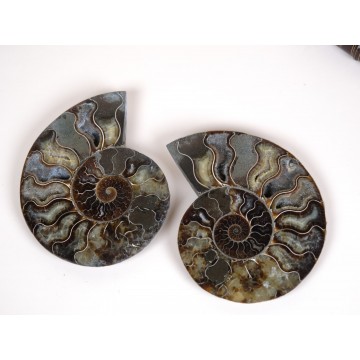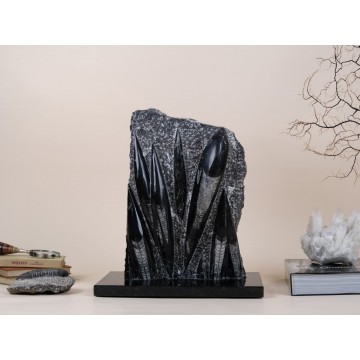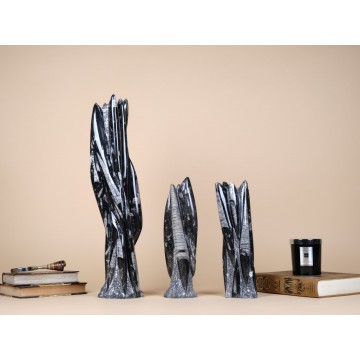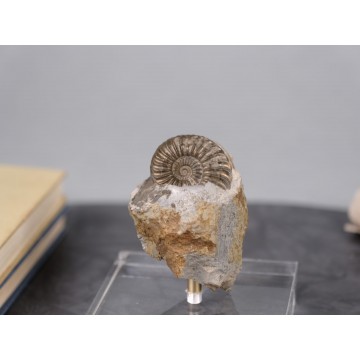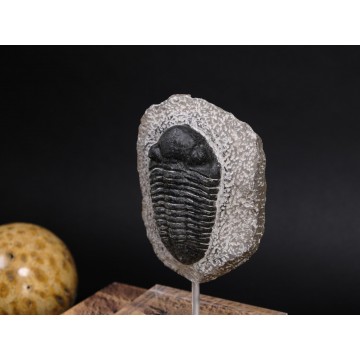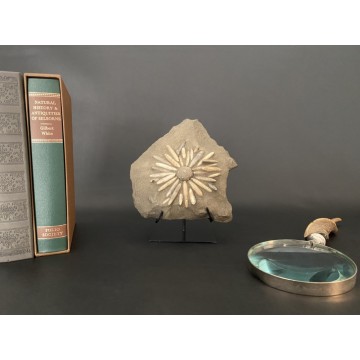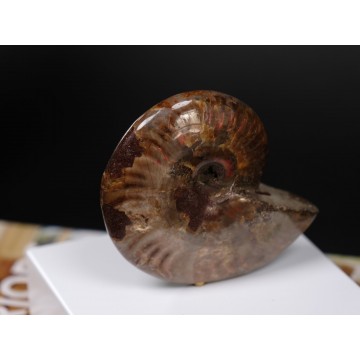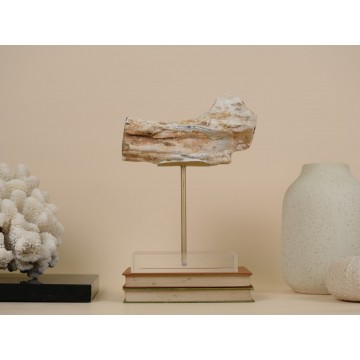Orthoceras column fossil, a captivating relic hailing from a time more than 400 million years ago. These prehistoric squid-like beings, preserved through eons within oceanic sediments, offer an unparalleled glimpse into the past. Elegantly aligned by primordial currents on the ocean floor prior to their entombment, these creatures maintain their relative positions, frozen in the embrace of time.
Skillfully revealed through meticulous exposure and a masterful polish, the fossils come to life against their matrix backdrop. The artful interplay of light and shadow accentuates the delicate features of these long-extinct cephalopods. With their tentacles and ink sacs, reminiscent of their modern-day squid counterparts, these creatures possessed a mystique that transcends eras. Notably, these cephalopods boasted external shells, characterized by hollow internal chambers partitioned by intricate walls known as septa, a fascinating trait shared by their kin.
Originating from the Devonian period approximately 410 million years in the past, this fossil bears witness to the eons that have passed, finding its origin amidst the rugged landscapes of the Anti-Atlas Mountains in Southern Morocco.


